Everest Base Camp (EBC) Kalapathar Trek
At an elevation of 5,545 meters (18,192 feet), Kalapathar offers a mesmerizing panoramic view of the Everest region, enticing trekkers with its awe-inspiring beauty and challenging terrain.
The trek to Everest Base Camp (EBC) Kalapathar is not just a physical journey but a soul-stirring experience that immerses travelers in the grandeur of the Himalayas.
As adventurers navigate through rugged landscapes and witness nature’s marvels, each step unravels a new chapter of exploration and self-discovery.
Get ready to embark on a transformative quest that will test your limits and unveil the mysteries of the world’s highest peaks.
Key Points
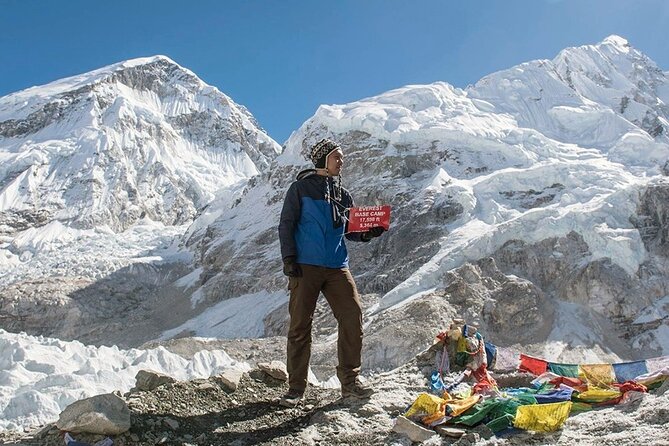
- Trek to Everest Base Camp and Kalapathar for a soul-stirring journey
- Best time: March to May, September to November for stable weather
- Prepare for altitude challenges and acclimatization strategies
- Embrace the adventure with safety precautions and essential gear
Trek Overview
Embark on the Everest Base Camp (EBC) Kalapathar Trek, a thrilling journey that promises breathtaking views of the world’s highest peak.
The trail difficulty varies from moderate to strenuous, offering trekkers a challenging yet rewarding experience. Hikers will navigate through rugged terrain, steep ascents, and high altitudes, requiring a good level of physical fitness.
Along the way, adventurers can indulge in the unique flavors of local cuisine, such as hearty dal bhat, momos, and Sherpa stew, providing a taste of authentic Himalayan dishes.
These meals not only fuel the body but also offer a culture into the culinary traditions of the region. Be prepared to savor these delicious dishes while marveling at the awe-inspiring landscapes surrounding the trail.
Best Time to Trek
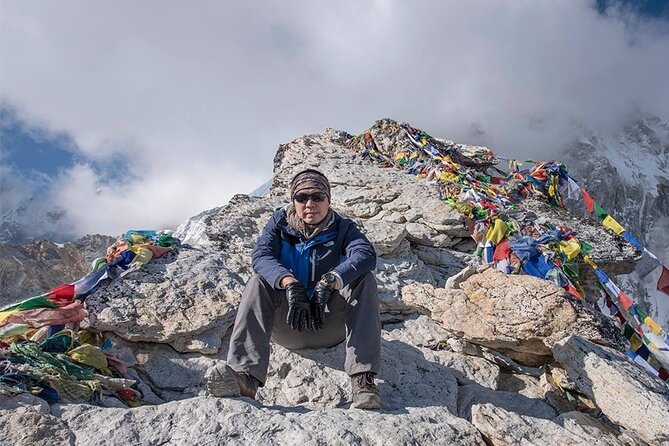
When planning your Everest Base Camp (EBC) Kalapathar Trek adventure, understanding the best time to trek is crucial for optimal weather conditions and breathtaking views of the world’s highest peak.
The ideal time to undertake this trek is during the peak season, which falls in the spring months of March to May and the autumn months of September to November. During these periods, the weather conditions are generally stable, with clear skies and moderate temperatures, making it perfect for trekking.
Spring brings blooming rhododendrons along the trail, adding a pop of color to the landscape, while autumn offers clear visibility of the majestic Everest and surrounding peaks.
Choosing to trek during these seasons enhances the overall experience and ensures a memorable journey to Everest Base Camp.
Route Highlights
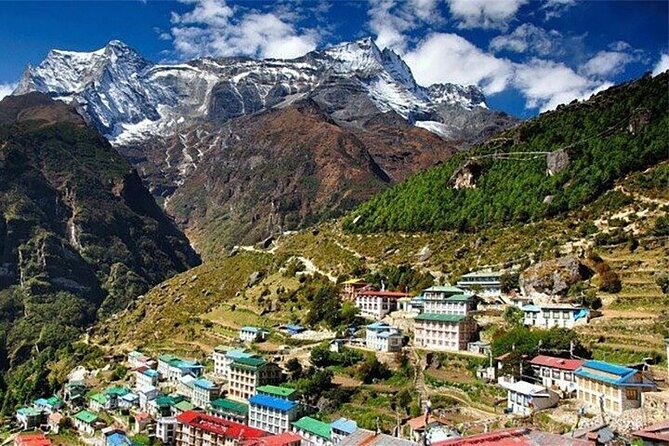
One of the most captivating aspects of the Everest Base Camp (EBC) Kalapathar Trek is the rugged beauty of the route, showcasing a diverse range of landscapes and cultural landmarks.
-
Photography spots: The trek offers stunning photo opportunities at every turn, from snow-capped peaks to colorful prayer flags fluttering in the wind.
-
Local cuisine: Experience authentic Sherpa cuisine along the way, indulging in hearty meals like Dal Bhat and Sherpa stew.
-
Wildlife sightings: Keep an eye out for Himalayan wildlife such as snow leopards, musk deer, and Himalayan tahr.
-
Cultural experiences: Enjoy the rich Sherpa culture, visiting monasteries, interacting with locals, and partaking in traditional ceremonies.
These highlights add depth to the journey, making it a truly unforgettable adventure.
Altitude and Acclimatization

Navigating the rugged terrains of the Everest Base Camp (EBC) Kalapathar Trek brings about a unique challenge in acclimatizing to the high altitudes along the journey. Altitude sickness is a common concern due to lower oxygen levels at higher altitudes. To combat this, hikers are advised to follow acclimatization strategies such as gradual ascent, staying hydrated, eating high-carb foods, avoiding alcohol, and listening to their bodies for any signs of altitude sickness like headaches or nausea.
It’s crucial to acclimatize properly to prevent more severe conditions like High Altitude Pulmonary Edema (HAPE) or High Altitude Cerebral Edema (HACE). By taking the necessary precautions and allowing the body time to adjust, trekkers can enjoy the breathtaking views and conquer the challenges of the EBC Kalapathar Trek.
Packing Essentials
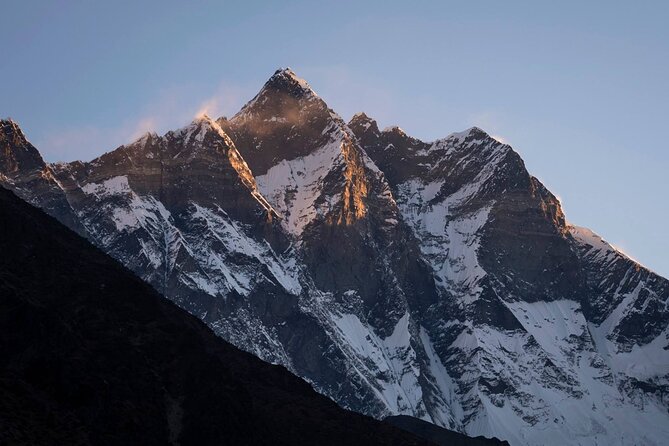
For a successful Everest Base Camp (EBC) Kalapathar Trek, essential packing includes sturdy hiking boots, insulated layers, a quality sleeping bag, high-altitude sunscreen, and a reliable water purification system. When preparing for this adventure, consider the following packing tips and gear recommendations:
-
Layer Up: Pack versatile clothing that can be layered for changing weather conditions.
-
Stay Hydrated: Bring a water purification system to ensure a safe water supply throughout the trek.
-
Protect Your Skin: High-altitude sunscreen is crucial to shield your skin from the intense mountain sun.
-
Invest in Quality: Opt for a durable and warm sleeping bag to stay comfortable during cold nights at higher altitudes.
These essentials will help you stay safe, comfortable, and prepared for the challenging journey ahead.
Accommodation Options
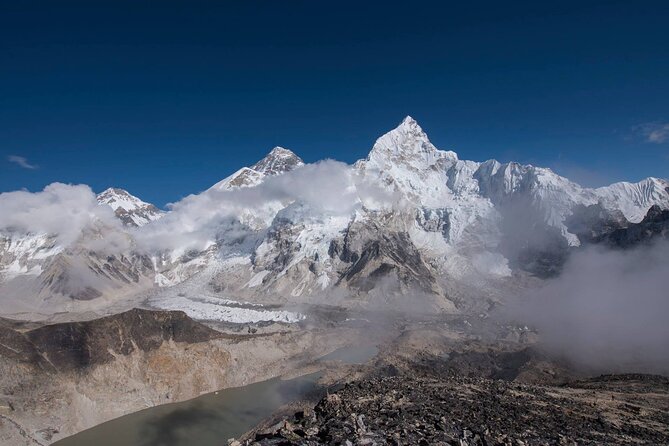
As trekkers make their way through the challenging terrain towards Everest Base Camp (EBC) Kalapathar, a variety of accommodation options await to provide rest and shelter along the journey. Trekkers can choose between staying in lodges or camping under the starry sky, each offering a unique experience.
Lodges provide a more comfortable option with basic amenities, while camping allows for a closer connection to nature. Within the lodges, trekkers can opt for tea houses, which are cozy and traditional, or hotels that offer more modern conveniences. Tea houses are popular among trekkers for their authentic feel and warm hospitality, whereas hotels cater to those seeking additional comforts.
Whichever option trekkers choose, each provides a welcoming retreat after a long day of trekking.
Safety Tips
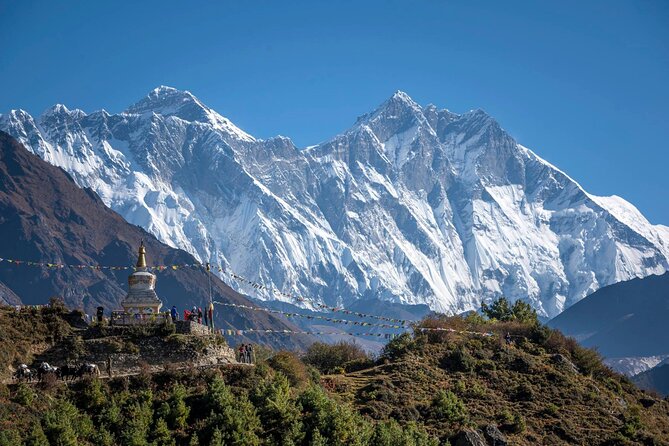
Prioritize safety by equipping yourself with essential gear and knowledge before embarking on the Everest Base Camp (EBC) Kalapathar Trek.
-
Emergency Procedures: Familiarize yourself with emergency protocols and the nearest medical facilities.
-
High Altitude Sickness: Learn to recognize symptoms like dizziness or nausea and know when to seek help.
-
Weather Conditions: Stay updated on the ever-changing weather; be prepared for sudden shifts.
-
Communication Devices: Carry a reliable communication device such as a satellite phone or a personal locator beacon.
Common questions
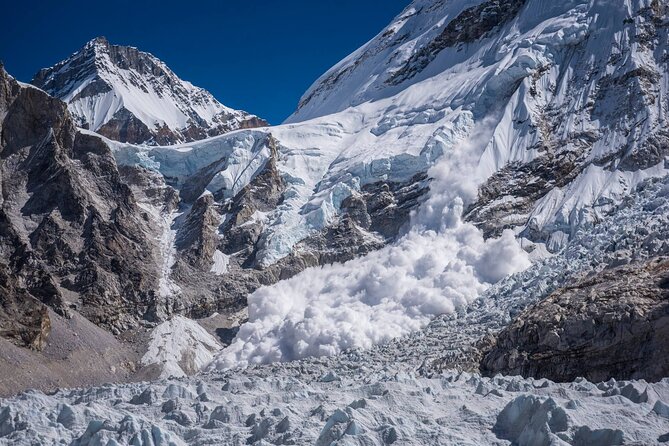
Are Permits Required to Trek to Everest Base Camp (Ebc) Kalapathar?
Permit requirements for trekking vary based on location and regulations. It is crucial to respect local culture and follow all necessary procedures. Ensuring proper permits not only abides by the law but also contributes to sustainable tourism.
What Types of Food Can Be Expected Along the Trekking Route?
Along the trekking route, trekkers can expect to enjoy a variety of local cuisine served at tea houses. These meals often include traditional dishes like dal bhat, momos, and Sherpa stew, providing a taste of the region’s culinary delights.
Is It Necessary to Hire a Guide or Porter for the EBC Kalapathar Trek?
For a hiker with experience and self-navigation skills, hiring a guide or porter isn’t necessary on the EBC Kalapathar Trek. This choice offers both budget savings and a sense of independence, allowing travelers to explore at their own pace.
Are There Any Medical Facilities or Emergency Services Available Along the Trekking Route?
Medical facilities along the trekking route are scarce, and emergency services are limited. It’s crucial for trekkers to carry their own medical supplies, including basic first aid kits and medications. Preparedness is key in remote locations.
How Physically Challenging Is the EBC Kalapathar Trek for a Beginner Hiker?
For a beginner hiker, the EBC Kalapathar Trek can be physically challenging due to altitude. Tips include gradual physical preparation, proper pacing, and allowing time for altitude acclimatization. It’s crucial to prioritize safety and listen to your body.
Last Words
Embark on the Everest Base Camp (EBC) Kalapathar Trek for an unforgettable adventure filled with breathtaking views and unforgettable moments.
From the towering peaks of Mount Everest to the rugged terrains and spectacular sunrises, this trek offers a once-in-a-lifetime experience for nature enthusiasts and thrill-seekers.
Be prepared to push your limits, learn about the beauty of the Himalayas, and create memories that will last a lifetime.
Don’t miss out on this epic journey to the roof of the world.